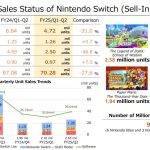“We do not agree that public spending is generating inflationary dynamics. I believe that the inflationary dynamics for the most part continue to be imported,” said Yorio.
The annual general inflation of the second economy in Latin America reached 4.42% in March, compared to 4.40% in February and above the Bank of Mexico (Banxico) objective of 3% more, minus one percentage point.
“We are once again seeing an increase in maritime transportation costs. For example, due to geopolitical tension in the Middle East, some ships can no longer pass through the Suez Canal,” Yorio said. “Panama has no water,” he added, referring to the drought that has limited crossings in the Panama Canal.
“All these elements are once again generating pressures on costs that are generating inflationary dynamics,” he stressed.
Earlier this week, Bank of Mexico deputy governor Jonathan Heath said expansionary fiscal policy in the run-up to the general election was complicating the bank's job of controlling inflation this year.
Yorio added that the elections in Mexico are not expected to cause “strong corrections.”
The Mexican peso, one of the world's most traded currencies, appreciated to its highest level in almost nine years last week, to 16.2559 pesos per dollar. The Mexican currency has weakened strongly in recent days due to growing risk aversion.








![[Img #74281]](https://thelatestnews.world/wp-content/uploads/2024/11/Is-the-HONOR-200-Pro-worth-buying-in-2024-Full-150x150.jpg)





